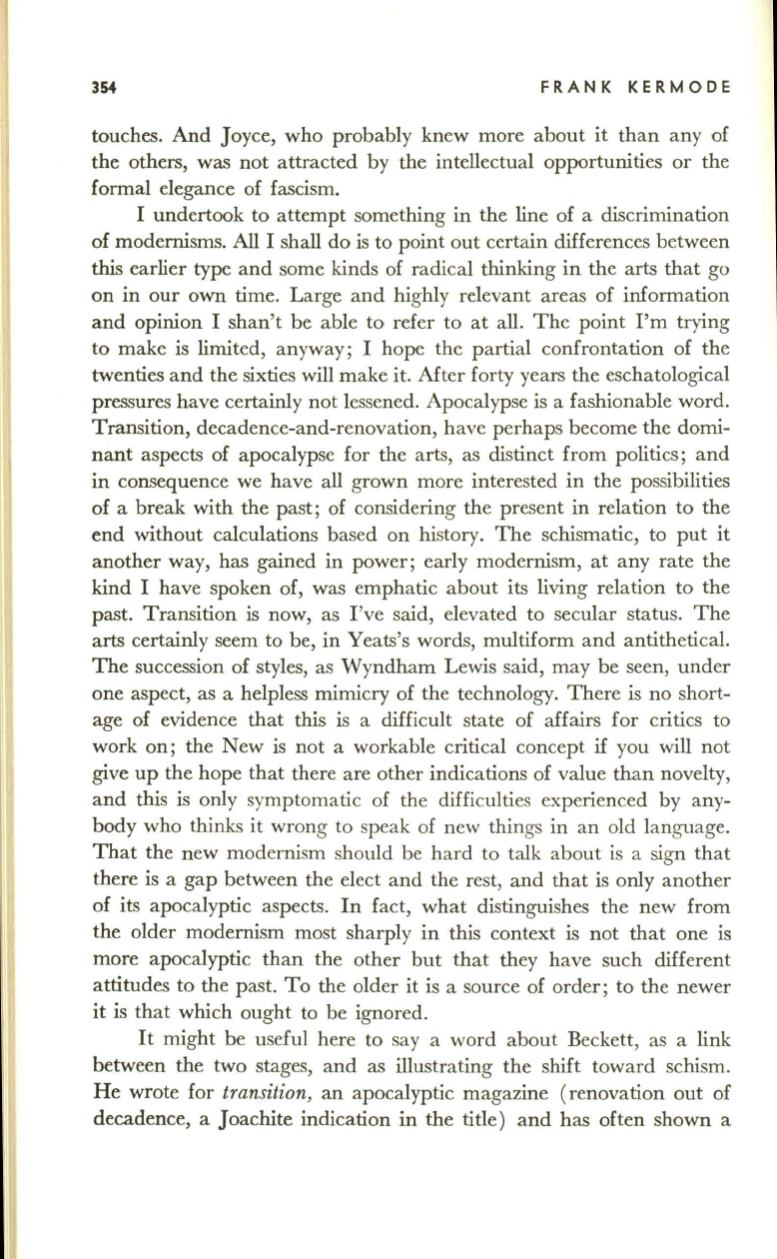
354
FRANK KERMODE
touches. And Joyce, who probably knew more about it than any of
the others, was not attracted by the intellectual opportunities or the
formal elegance of fascism.
I undertook to attempt something in the line of a discrimination
of modernisms. All I shall do is to point out certain differences between
this
earlier type and some kinds of radical thinking in the arts that go
on in our own time. Large and highly relevant areas of information
and opinion I shan't be able to refer to at all. The point I'm trying
to make is limited, anyway; I hope the partial confrontation of the
twenties and the sixties will make it. After forty years the eschatological
pressures have certainly not lessened. Apocalypse is a fashionable word.
Transition, decadence-and-renovation, have perhaps become the domi–
nant aspects of apocalypse for the arts, as distinct from politics; and
in consequence we have all grown more interested in the possibilities
of a break with the past; of considering the present in relation to the
end without calculations based on history. The schismatic, to put
it
another way, has gained in power; early modernism, at any rate the
kind I have spoken of, was emphatic about its living relation to the
past. Transition is now, as I've said, elevated to secular status. The
arts certainly seem to be, in Yeats's words, multiform and antithetical.
The succession of styles, as Wyndham Lewis said, may be seen, under
one aspect, as a helpless mimicry of the technology. There is no short–
age of evidence that this is a difficult state of affairs for critics to
work on; the New is not a workable critical concept
if
you will not
give up the hope that there are other indications of value than novelty,
and this is only symptomatic of the difficulties experienced by any–
body who thinks it wrong to speak of new things in an old language.
That the new modernism should be hard to talk about is a sign that
there is a gap between the elect and the rest, and that is only another
of its apocalyptic aspects. In fact, what distinguishes the new from
the older modernism most sharply in this context is not that one is
more apocalyptic than the other but that they have such different
attitudes to the past. To the older it is a source of order; to the newer
it is that which ought to be ignored.
It might be useful here to say a word about Beckett, as a link
between the two stages, and as illustrating the shift toward schism.
He wrote for
transition,
an apocalyptic magazine (renovation out of
decadence, a J oachite indication in the title) and has often shown a


